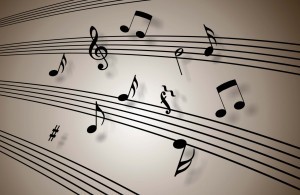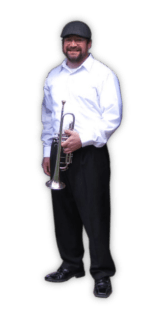 Sight-reading can be a most difficult endeavor, especially when there are thousands of distractions at a live performance such as a gorgeous individual right in the front row, the hot stage lights, the lack of space or maybe that annoying ‘bone player at your six o’clock (just kidding trombonists!). Do any of these factors sound familiar? Navigating seamlessly through fast tempos and lots of key changes can make even the most seasoned professional axe man (or woman) cry all the way home from the gig. Don’t worry, there’s help! In fact, you have the ability to help yourself to a more enjoyable performance by following this list of four easy sight-reading tips:
Sight-reading can be a most difficult endeavor, especially when there are thousands of distractions at a live performance such as a gorgeous individual right in the front row, the hot stage lights, the lack of space or maybe that annoying ‘bone player at your six o’clock (just kidding trombonists!). Do any of these factors sound familiar? Navigating seamlessly through fast tempos and lots of key changes can make even the most seasoned professional axe man (or woman) cry all the way home from the gig. Don’t worry, there’s help! In fact, you have the ability to help yourself to a more enjoyable performance by following this list of four easy sight-reading tips:
1. Review every key signature and mode until you know each one like your mother!
Let’s face it, scales seem so boring to practice. You’ll have to find innovative ways to practice since feeling confident in any key begins with knowing each key signature and how each mode sounds. Focus on being able to recall each accidental in a particular key as well as on getting the scale under your fingers. A little time each day on scales will get you through hours out on the stage.
2. Sight read charts with a metronome.
By charts I specifically mean big band, swing and jazz band literature. Figure out how to get some parts that are in your range in order to get started. The best ones are the arrangements by Kubis, Nestico, Catingub, Kenton, Ellington/Strayhorn, Frank Mantooth, Oliver Nelson, Thad Jones/Mel Lewis and others. You don’t have to play lead parts. Actually, any part will do. The substance here is that the rhythms found in these charts are filled with key signature changes, usually written in cut-time, and often the same lick can be notated in several different ways according to arranger, publisher etc. After finding the performance tempo via metronome, cut that in half to start. The critical discipline is to go all the way through the piece at the tempo with which you’ve started a few times, snatching up as many rhythms as you can, then quickly move onto a new chart as soon as the one your working with starts to get familiar. Later on when you feel more comfortable with the rhythms and counting, you’ll be able to read similar charts very effectively up to tempo. Once you’ve assimilated certain common rhythms at half tempo, your mind will be able to speed up to full tempo with ease. Try it and you’ll reap some serious musical benefits!
3. Listen to lots of music… score in hand with which to follow along.
This tip is self-explanatory, nevertheless, please enjoy an enriching elaboration: Grab some scores for any work of which you already have or can get a recording. There are music libraries at universities and within public libraries across the country that have amazing music on file. Next you’ll have to sit down and do some real listening. Yep that’s right, it’s time to start doing some real listening. You see, most of us hear music rather than really listen. Music that is heard is processed in the background. Sometimes we focus on the words even, but we don’t catch each voice (instrument) individually. What we usually experience is the complete sound of a group and our ears ignore each instruments specific contribution to the overall sound of the piece. In order to get this going, avoid distractions. Allow yourself to really focus on following the score as the music plays. Each time you listen, follow a different instrument all the way through the work. Once you begin to truly listen, an entire language of rhythm will become yours to own just as if you were reading and writing in your native tongue.
4. Get to the gig early
Another self-explanatory tip but, in the words of G.I. Joe – the real American hero, “Knowledge is power!”. Getting to the gig early creates many positive effects to the sight-reading aspect of professional music performance. First, you’ll have a chance to silently read over each assigned part. You can “cheat” by noting any tricky rhythms or key changes. If you can’t hum a rhythm to yourself quietly, then chances are you can’t play it out loud on the horn either! Next, there are some notable side effects to punctuality that will always keep a musician sharper on stage. For one thing, you’ll have a smidge more personal space. The last player to get on stage (or to the orch. pit) always gets the least amount of real estate during the gig. This you can count on like gravity (-: Also, being early and getting comfortable with the current surroundings should be a great way to ease any tension and nervousness. Take the extra time to stretch and breathe. This will aid in your ability to focus when reading through some of those treacherous licks in front of a captive audience.

Nice one
God blessed you more and more
Thank you so much for the gracious comments, ~SW